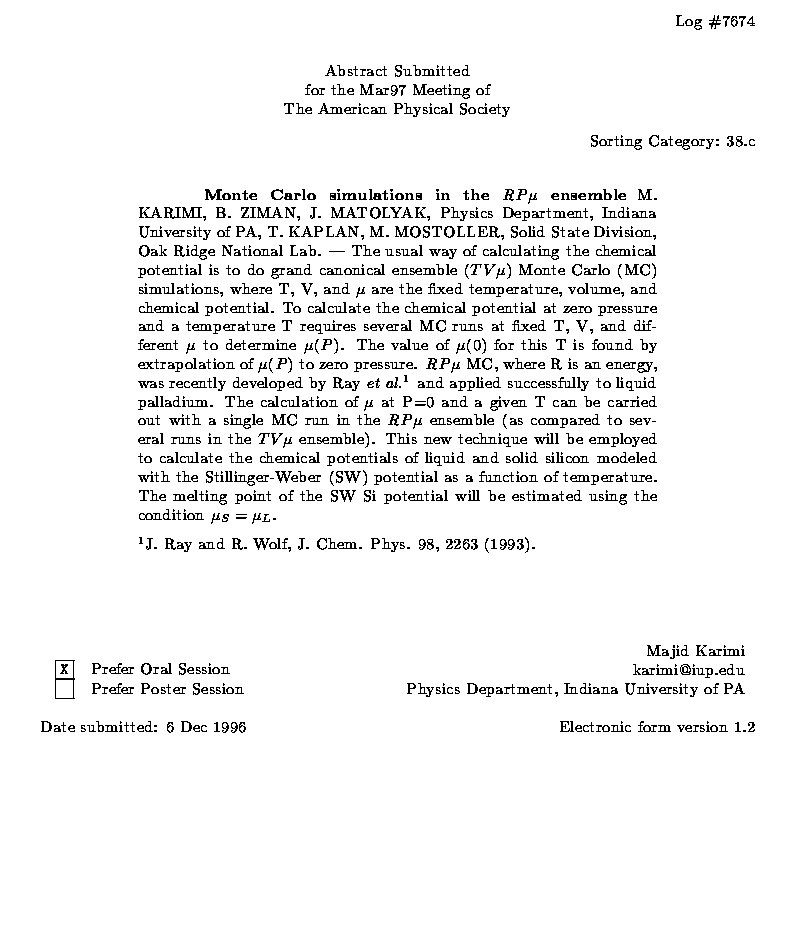Monte Carlo simulations in the RPμ ensemble (Monday, March 31, 1997)
This is the abstract for the paper I presented at the 1997 March Meeting of the American Physical Society in Kansas City. This text is taken from the official program listing from that meeting.
Graphical version | Text version
Session M11 - Quantum Monte Carlo.
MIXED session, Thursday morning, March 20
Room 1202B, Conv. Center
[M11.07] Monte Carlo simulations in the RPμ ensemble
M. Karimi, B. Ziman, J. Matolyak (Physics Department, Indiana University of PA), T. Kaplan, M. Mostoller (Solid State Division, Oak Ridge National Lab.)
The usual way of calculating the chemical potential is to do grand canonical ensemble (TVμ) Monte Carlo (MC) simulations, where T, V, and μ are the fixed temperature, volume, and chemical potential. To calculate the chemical potential at zero pressure and a temperature T requires several MC runs at fixed T, V, and different μ to determine μ(P). The value of μ(0) for this T is found by extrapolation of μ(P) to zero pressure. RPμ MC, where R is an energy, was recently developed by Ray et al.(J. Ray and R. Wolf, J. Chem. Phys. 98, 2263 (1993).) and applied successfully to liquid palladium. The calculation of μ at P=0 and a given T can be carried out with a single MC run in the RPμ ensemble (as compared to several runs in the TVμ ensemble). This new technique will be employed to calculate the chemical potentials of liquid and solid silicon modeled with the Stillinger-Weber (SW) potential as a function of temperature. The melting point of the SW Si potential will be estimated using the condition μS = μL.
